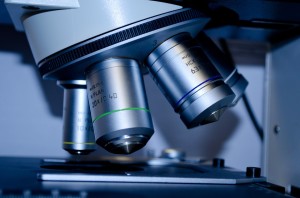Research Confirms the Benefits of Massage Therapy
 Ask anyone who regularly gets a massage and he or she can tell you how wonderful massages are and how much healthier they feel after getting them. Within the past few years, there have also been research studies that validate the positive benefits of massage therapy.
Ask anyone who regularly gets a massage and he or she can tell you how wonderful massages are and how much healthier they feel after getting them. Within the past few years, there have also been research studies that validate the positive benefits of massage therapy.
Massage therapy research conclusions
The American Massage Therapy Association lists the following research initiatives that have documented the benefits of massage therapy:
1. Massage Therapy’s benefit to the recipient’s immune system
There is much research which indicates that massage therapy causes an increase in the number of lymphocytes in a recipient’s body. Participants in a group of HIV positive adolescents who received either massage therapy or progressive muscle relaxation twice weekly for 12 weeks were evaluated for depression, anxiety, and immune system changes. At the end of the study, the massage therapy recipients reported less anxiety and depression, and showed enhanced immune function. The changes to their immune systems were an increase in Natural Killer cells.
In another study, twenty-nine men who had espoused a gay preference were evaluated, with 11 of the 20 HIV positive men serving as a control group. The study found a significant increase in Natural Killer cells, a decrease in Cortisol, and significant decreases in anxiety. The researchers theorized that an increase in cytotoxic capacity can be associated with massage therapy. The researchers hope to transpose their findings to other illnesses.
What these findings mean is that people whose immune systems allow colds and flu as well as people whose immune systems are compromised in other ways could benefit from a healthy dose of massage therapy to boost their immune systems. Regular massages definitely do make the immune system stronger.
2. Help for people with Seasonal Affective Disorder
The Mayo Clinic defines Seasonal Affective Disorder as a type of depressive disorder that begins in the fall and ends in the springs. It is related to the lesser amount of light available in the winter time. Sufferers feel moody, lack energy, eat more carbohydrates, and in general feel unhappy and depressed.
Until the research was done on the benefits of massage therapy for Seasonal Affective Disorder, the only treatments were light therapy with full spectrum bulbs and antidepressants.
Affecting as many as one in five Americans, Seasonal Affective Disorder (also called the winter blues) can be ameliorated by regular massage therapy. Researchers found that with regular massage therapy, recipients’ circadian rhythms were reset, leading to improved moods, better sleep, and increased energy.
3. Massage Therapy as an adjunct to cancer treatments
Pain management and quality of life are important parts of any cancer therapy. The Mayo Clinic reports that one third of all cancer therapy patients are subject to pain related to their cancer. This pain may be an extension of the cancer therapy that destroys tissue, or it may be a result of the cancer’s impact on the patient’s body.
One study of almost 600 cancer patients showed significantly reduced cancer-related pain with massage therapy. Relief from the pain improved the patients’ quality of life and enhanced their recovery. In a 2014 research study consisting of patients with acute myelogenous leukemia who received Swedish massage three times weekly for seven weeks, participants reported reduced stress, and increased pain relief and relaxation.
Another study undertaken with patients near their end of life with cancer found that massage therapy helped improve their sleep, reduced their pain, and enhanced their last few days’ quality of life.
While those of us who regularly receive massage therapy do not need research to convince us that it is of medical benefit to us, hopefully these studies will convince the people considering massage therapy as a medical treatment to go ahead and let themselves enjoy it to the fullest.


